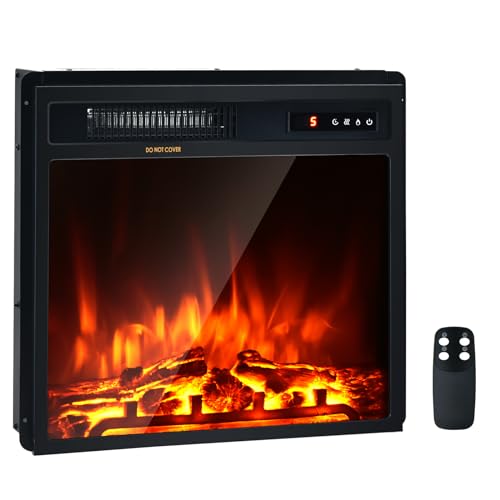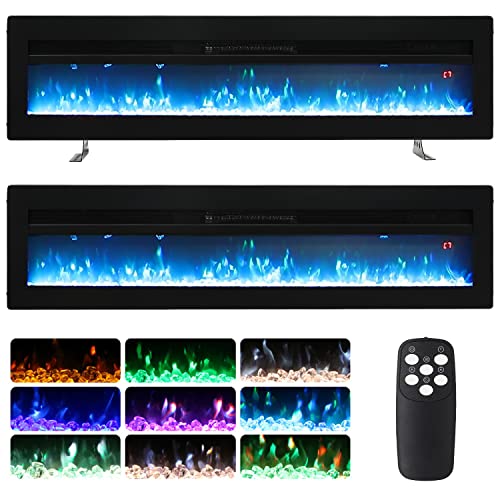Five Killer Quora Answers On Wood Burning Fires
페이지 정보
작성자 Dallas 댓글 0건 조회 4회 작성일 25-01-01 07:25본문
 Wood Burning Fires Need to Be Hot and Clean
Wood Burning Fires Need to Be Hot and CleanWood burning fires are not only relaxing and captivating They're also an essential aspect of our health and well-being. However, they must be clean and hot for them to function properly.
Green wood, or unseasoned wood has high levels of moisture which makes it difficult to ignite and burn efficiently. The seasoned, or kiln dried wood has a lower moisture content and is more easy to light and burn for longer.
Efficient Combustion
The wood fire should be hot enough to burn off moisture and reach temperatures over 540 deg F. 800 deg F in ideal conditions) in ideal conditions) where the secondary combustion process begins. This is the most crucial process for efficient combustion of the fuel and reducing pollutants, smoke, and creosote buildup in the flue.
It is crucial to understand that the temperature needed to ignite the secondary combustion process is dependent on the type of fuel used and the surrounding conditions. The best way to minimize these variations is by using dry firewood that is seasoned and has an average moisture content of less than 20 percent.
The amount of air delivered to a fire can also have a significant influence on its temperature and burning time. The more oxygen available, the hotter the fire will burn. If the supply of air is insufficient a wood fire produces less heat and will burn at a lower rate.
To ensure maximum burn time and efficiency, a wood stove or fireplace insert should be equipped with an adjustable air damper. The wide-open setting allows the fire to take all the oxygen it needs and will quickly drain the fuel supply. A fire that is contained within the confines of a small area is less likely to spread.
A well-dried load of firewood is also critical to efficient wood burning. If wood is cut fresh and hasn't had the chance to dry, it will have high water content, which can be difficult to burn. To ensure optimal performance it is recommended that you only use seasoned wood that has been stored outdoors for six to nine month.
The BTU content of wood is another factor to take into consideration. For example, white pine or spruce trees might be cheaper than eastern hardwoods, such as black locust and shagbark hickory, however, the BTU values of the latter are much higher, meaning they will provide more heat for the same amount of wood burned. This is why it's important to consider your heating requirements and the cost of fuel when choosing your firewood.
Clean Burning
Wood smoke can cause indoor air pollution, which can cause irritation to lungs and respiratory discomfort in senior citizens and children. These pollutants include volatile organic compounds (VOCs) like formaldehyde and benzene as well as polycyclic aromatic hydrocarbons, such as benzo-apyrene, can cause cancer. When wood is burned the volatile tars like creosote can also be released.
Smoke from old, poorly designed fireplaces and wood stoves could contribute to poor outdoor air quality by reducing visibility and contributing to photochemical pollution. When used correctly, however modern combustion technology in clean-burning wood stoves and places can help reduce the emissions.
Stage 1 - Vaporization Moisture: As the log gets warmer it releases water vapour, which escapes through the chimney flue. This is more energy-intensive than when the log was dried to dry prior to burning. It also wastes energy that could be used for heating your home.
In the flue, these vapors combine with carbon particles to create smoke. Smoke is a major contributor to particulate matter in the air and is one of the major sources of smog we experience on clear days.
If properly used when used correctly, cast iron wood burner stoves and fireplaces that use clean burn technology can help reduce the problem by burning the logs into charcoal-like conditions, which releases less volatile gasses and releases the majority of the energy produced by the log into usable heat.
Avoid using damp or sour wood for your fire as it is more difficult to burn and produces a lot more creosote than well-seasoned wood. Also, don't overburden your stove with thin and soft wood like pine or fir It takes more energy to burn them and they create more smoke which can cause chimney fires.
Use a bucket made of steel to remove ashes from the stove, and always wait for them to cool before handling them. Store or dispose of ashes correctly. They are able to ignite again when exposed to water and can be hazardous in landfills. Use them in your garden or at home instead.
Storing, seasoning and correctly burning your wood will help you save money and keep your stove running efficiently. It is also important to regularly clean your chimney to remove creosote that has been deposited and other particles as well as to avoid chimney fires and maintain the safety of your operation.
Safety
It's hard to beat a warm fireplace in the winter cold However, safety precautions must be taken. If fires are not properly constructed, burned or left unattended, hazardous fumes could be released into the house and creosote accumulations can form within the chimney. These deposits could block the flue, inhibit airflow, and cause your wood stove or furnace to work less efficiently.
Never burn painted or treated wood, household trash paper, rags, or other combustible materials in your wood-burning fireplace or stove. They release toxic gasses and release toxic fumes, like carbon monoxide. Do not use flammable liquids as a fire starter. Kerosene, gasoline and lighter fluid can increase emissions, produce toxic creosote, and even cause chimney fires.
Keep combustible objects, such as furniture, curtains and toys, a safe distance from your stove or fireplace. Do not hang clothes near or on your wood-burning fireplace. Make sure your children are aware that the fireplace is hot and should not be touched.
Make sure to use only wood that has been seasoned for your stove or fireplace. Seasoned wood has been dried through the summer to decrease the moisture content. Wet woods produce more creosote and smoke, whereas seasoned logs burn much more efficiently and with less mess. Wood that is seasoned looks darker, has cracks in the end grain, and sounds hollow when tapping. Store your logs outdoors stacked neatly with the top securing and allowing air to circulate around them.
The appliances that are overloaded generate more smoke and less warmth. Fires that are overloaded can also create dangerous levels of carbon monoxide. If you have an older appliance that has a metal lining, inspect the liner frequently for signs of wear and tear that can cause a chimney fire.
The EPA recommends using split, dry and well-seasoned wood in order to help reduce smoke in your home. Create a fire by using small pieces. Avoid soft woods such as pine. Pine is a great starting material for a fire, but shouldn't be used more than. These soft woods are brimming with sap and resin, which when burned, create an excessive amount of creosote in the chimney.
Maintenance
A warm flame in a wood burning stoves on sale burning fireplace is an ideal way to warm up during the cold winter nights. It is crucial to maintain the fireplace to make the most of it. Regular cleaning and inspections of your fireplace can help you to avoid any problems. This prevents creosote buildup and keeps the chimney clear to ensure maximum efficiency.
If the wood doesn't fully burn, creosote forms in the chimney. If a significant amount of creosote builds up it can cause chimney fires which are the second leading cause of house fires in the United States. A number of issues can cause a fire to burn completely, including dampers that are improperly closed or damaged in the chimney liner, and a lack of regular cleaning and removal of ash.
Creosote can build up excessively when wood isn't properly treated. Water could comprise up to half of the weight of a wooden piece. In the course of a fire it boils and releases heat but it also consumes energy in the process. The water vapor that results is then condensed as creosote and released into the atmosphere as part of the smoke.
Soot is a different harmful byproduct of burning wood burning stoves small. Soot, though less dense than creosote can block airflow and stick to the walls. It also poses an hazard to fire because it is a natural igniter when exposed to gasses that ignite.
The ashes should be removed and place them in a metal ash container that you keep outside on a non-flammable surface. The ashes can also serve as an energy source for plants Don't forget to scatter them across the backyard!
You should have a Certified Regency Dealer inspect your fireplace and chimney regularly. The technician can look for cracks, creosote and soot levels, a properly shut damper, and the condition of the catalyst. If you have a double-stage fireplace that has an air tube, you should remove the catalyst and inspected visually for obstructions. Refer to your user manual for directions on how to do this for your particular unit.

댓글목록
등록된 댓글이 없습니다.